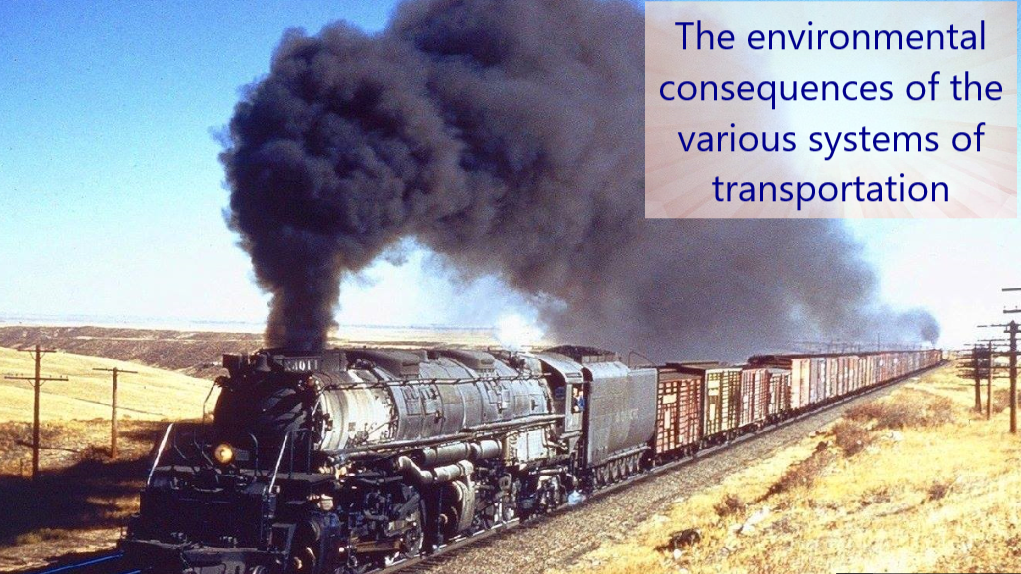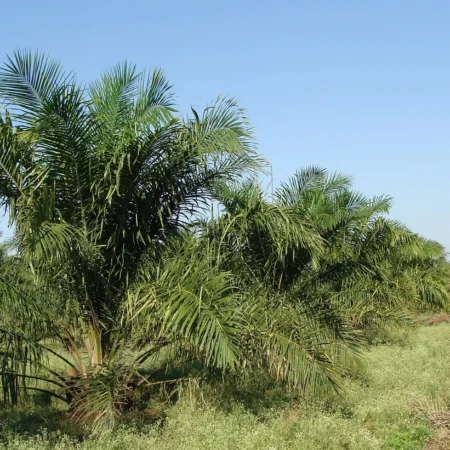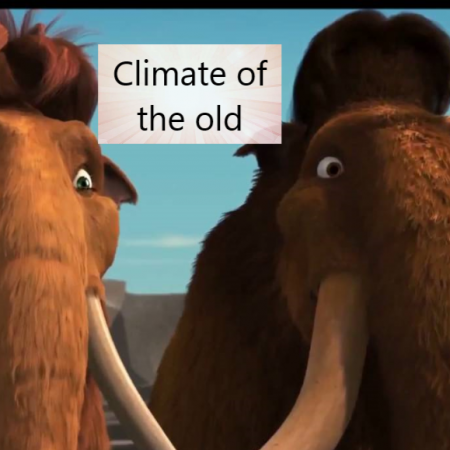Environmental Consequences of the Various Systems of Transportation
Introduction
Transportation is used for moving people, animals, and other goods from one place to another. Means of transport is a term used to distinguish between different ways of transportation or transporting people or goods.
The different modes of transport are air, water, and land transport, which includes Rails or railways, road, and off-road transport. Other modes also exist, including pipelines, cable transport, and space transport.
Human-powered transport and animal-powered transport are sometimes regarded as their own mode but never fall into the other categories.
The means of transport, on the other hand, refers to the (motorized) vehicles necessary for transport according to the chosen mode (car, airplane, ship, truck, and rail).
Each mode of transport has a fundamentally different technological solution, and some require a separate environment. Each mode has its own infrastructure, vehicles, and operations.
Each of the various systems of transportation has its impact on the environment and its biodiversity. Some major transportation system has more damaging consequences on the environment while others play a significantly low environmental impact.
According to Fuglestvedt., (2007) the environmental impact of transport is significant because transport is a major user of energy, and burns most of the world’s petroleum.
Transport has several impacts on the environment. Emissions contribute to air pollution and climate change, noise causes nuisance and health risks and infrastructure has serious impacts on landscape and ecosystems.
In addition to these impacts on the environment, transport has also other severe impacts on society. Every year hundred-thousands of people are killed and injured in accidents and in various densely populated areas, high congestion levels result in time losses.
Impact and consequences of various systems of transportation to the environment
- Climate change
Climate change is one of the major environmental consequences of transportation systems. The danger of climate change is a global environmental problem. Climate change is one of the great challenges of our current society.
In the last decades, there has come more and more evidence that the emission of greenhouse gas contributes to the effect of global warming. Particularly the emission of carbon dioxide (CO2) from the burning of fossil fuels is a major contributor.
For the transport sector, the greenhouse gas emissions are dominated by the CO2 emissions from burning fossil fuels. These are strongly related to transportation energy use. Emissions of greenhouse gases are an extremely relevant issue when it comes to our choice of transport means.
According to Chinowsky (2013), the activities of the transport industry release several million tons of greenhouse gases each year into the atmosphere, accounting for between 25 and 30% of all greenhouse gas emissions.
There is an ongoing debate about to what extent these emissions are linked with climate change, but the debate relates more to the extent of these impacts than their nature.
Some gases, particularly nitrogen oxide, also participate in depleting the stratospheric ozone (O3) layer, which naturally screens the earth’s surface from ultraviolet radiation. The rise in air traffic, in addition to its emissions, has increased the number of contrails, which are mainly ice crystals formed from condensation around planes flying at high altitudes.
They can contribute to climate change in a paradoxical fashion as, on the one hand, they can trap heat, and on the other, they are also reflecting solar radiation.
Global warming
Similar to climate change, the Intergovernmental Panel on Climate Change (IPCC, 2007) has examined a range of future climate change scenarios and found that the globally averaged surface air temperature is projected by models to warm 1.1 to 6.4°C by 2100 relative to 2000, and globally averaged sea level is projected by models to rise 18 to 59 cm by 2100.
This increase in temperature is a result of the release of greenhouse gasses into the atmosphere from the engines of cars, shipping vessels, railways locomotives, and airlines planes.
The warming is expected to vary by region, and to be accompanied by changes in precipitation, changes in the variability of climate, and changes in the frequency and intensity of some extreme climate phenomena (drought, flooding) as well as impacts on ecosystems, and diseases. (IPCC, 2007).
2. Air pollution
The emission of gases from traffic constitutes an important source of environmental pollution all over the world (Hofman et al., 2014). These emissions depend mainly on the type of transport and fuel.
Potential sources of contaminants associated with railways, road transport networks include diesel exhaust, and the abrasion of brakes, wheels, and rails, as well as dust from the transport of minerals and treated railway ties (Levengood et al., 2015).
The main pollutants emitted from the diesel-powered locomotives are carbon dioxide (CO2), methane (CH4), carbon monoxide (CO), nitrogen oxides (NOx), nitrous oxide (N2O), sulfur dioxide (SO2), non-methane volatile organic compounds (NMVOC), particulate matter (PM) and hydrocarbon (HC) (Cheng and Yan, 2011).
Toxic air pollutants are associated with cancer, cardiovascular, respiratory, and neurological diseases. Carbon monoxide (CO) when inhale affects the bloodstream, reduces the availability of oxygen, and can be extremely harmful to public health.
Emission of nitrogen dioxide (NO2) from transportation sources reduces lung function, affects the respiratory immune defense system, and increases the risk of respiratory problems.
The emissions of sulfur dioxide (SO2) and nitrogen oxides (NOx) in the atmosphere form various acidic compounds that when mixed in cloud water creates acid rain.
Acid precipitation has detrimental effects on the built environment, reduces agricultural crop yields, and causes forest decline. crops, as well as forests and other ecosystems, are damaged by acid deposition, ozone exposition, and SO2.
3. Smog
Smog is a mixture of solid and liquid fog and smoke particles formed through the accumulation of carbon monoxide, ozone, hydrocarbons, volatile organic compounds, nitrogen oxides, sulfur oxide, water, particulates, and other chemical pollutants.
The reduction of visibility caused by smog has several adverse impacts on the quality of life and the attractiveness of tourist sites. Particulate emissions in the form of dust emanating from vehicle exhaust and non-exhaust sources such as vehicle and road abrasion impact air quality.
The physical and chemical properties of particulates are associated with health risks such as respiratory problems, skin irritations, eyes inflammations, blood clotting, and various types of allergies to man and other higher mammals.
Smog is often aggravated by local physical and meteorological conditions, creating periods of high smog concentration and public responses to mitigate them, such as restricting automobile use temporarily.
4. Noise pollution
Noise represents the general effect of irregular and chaotic sounds on people as well as animal life. Basically, noise is an undesirable sound. Noise levels vary, depending on the landscape and weather; open and flat areas allow noise to travel further than forest or mountains areas.
In mountainous areas, the effect of noise is greater within valleys, when their width is less than the height of their walls, reducing the attenuating effect of noise (Chiocchia et al., 2010).
Transport noise emanating from the movement of transport vehicles and the operations of ports, airports, and railyards affects human health, through an increase in the risk of cardiovascular diseases. Increasing noise levels have a negative impact on the urban environment reflected in falling land values and loss of productive land uses.
Railway noise pollution can be either from airborne sound or from vibration-induced as a result of rail traffic (Palacin et al., 2014).
The main source of railway noise comes from freight wagons, followed by high-speed trains and inner-urban railways (Guarinoni et al., 2012). Aside from rail noise, non-audible vibrations are also generated by the trains, transmitted via the tracks, and transferred to the soil.
Noise pollution from railways also has a negative consequence on the value of the property (real estate). Property such as houses, in close proximity to railway lines often reduces in value as a result of noise pollution from these locomotives.
5. Soil pollution
Soil pollution is another environmental consequence resulting from transport network systems, especially railways.
Cleaning the ballast of ships and trains using ethylenediaminetetraacetate (EDTA) with water or thermosetting plastic resin are techniques that allow the recycling of pollutant components in the surroundings of the railway network or shipping cargo carrier.
Cleaning it can typically involve the use of products such as solvents or surfactants, which vary in efficiency and potential environmental impacts (Anderson et al., 2002).
The ballast cleaning technology with aqueous solutions of disodium EDTA can ensure metal extraction without altering the stones’ mechanical and physical characteristics, allowing the reuse of the ballast (Di Palma and Petrucci, 2015).
The use of EDTA offers a high extraction efficiency of heavy metals (Di Palma et al. 2011); however, this chemical agent when not administered with caution often led to soil pollution because it has low biodegradability in the environment (Bucheli-Witschel and Egli 2001).
6. Soil erosion
The abrupt change of soil required to establish the railway embankment leads to vegetation loss, compresses the soil, and compromises water drainage (Ferrell and Lautala 2010). Thus, the soil becomes exposed and subject to an increasing runoff that promotes its erosion (Chen et al. 2015).
The erosion of rail embankments can result in washing out of sediments (Jin et al. 2008) that cause water pollution. Furthermore, Gregorich et al. (1998) noted that soil erosion and deposition alter the biological process of carbon mineralization in soil landscapes, which affects the soil quality and, hence, the vegetation.
7. Soil quality
Other major environmental consequences of the various transportation system are the reduction of the quality of the soil. The environmental impact of transportation on soil quality particularly concerns soil erosion and soil contamination.
Coastal transport facilities such as ports have significant impacts on soil erosion. Shipping activities are modifying the scale and scope of wave actions leading to damage in confined channels such as river banks (Baryalai and Lenka, 2012).
Highway construction or lessening surface grades for port and airport developments have led to an important loss of fertile land. Soil contamination can occur through the use of toxic materials by the transport industry.
Fuel and oil spills from motor vehicles are washed on roadsides and enter the soil. Chemicals used for the preservation of wooden railroad ties may enter the soil. Hazardous materials and heavy metals have been found in areas contiguous to railroads, ports, and airports.
8. Changes in Hydrology
Railway construction parallel to streams can result in hydrological disconnections (Pennington et al. 2010) that dry the soils (Blanton and Marcus 2009). Such disconnections can have a significant impact on the ecological function of riparian landscapes by negatively affecting floodplain evolution, riparian ecosystem processes, and associated biodiversity (Snyder et al., 2002).
Although urban riparian areas could harbor a great diversity of native canopy and shrub species, the richness of native canopy species was lower near railways (Snyder et al., 2002).
9. Land intake
Transportation facilities have an impact on the urban landscape. The development of port and airport infrastructure is a significant feature of the urban and peri-urban built environment.
Social and economic cohesion can be severed when new transport facilities such as elevated train and highway structures cut across an existing urban community. Arteries or transport terminals can define urban borders and produce segregation.
Major transport facilities can affect the quality of urban life by creating physical barriers, increasing noise levels, generating odors, reducing urban aesthetics, and affecting the built heritage (Baryalai and Lenka, 2012).
Emissions from vehicle travel are responsible for five major categories of costs that may be monetized: human health impacts, materials damage, agriculture damage, visibility degradation, and global warming.
10. Liquid pollution
Transport activities have an impact on hydrological conditions and water quality. Fuel, chemicals, and other hazardous particulates discarded from aircraft, cars, trucks, and trains or port and airport terminal operations can contaminate hydrographic systems.
Because demand for maritime shipping has increased, marine transport emissions represent the most important segment of the water quality impact of the transportation sector. The main effects of marine transport operations on water quality predominantly arise from dredging, waste, ballast waters, and oil spills.
Dredging is the process of deepening harbor channels by removing sediments from the bed of a body of water. Dredging is essential to create and maintain sufficient water depth for shipping operations and port accessibility. Dredging activities have a two-fold negative impact on the marine environment.
They modify the hydrology by creating turbidity that can affect marine biological diversity. The contaminated sediments and water raised by dredging require spoil disposal sites and decontamination techniques.
Waste generated by the operations of vessels at sea or at ports causes environmental problems since they can contain a very high level of bacteria that can be hazardous for public health as well as marine ecosystems when discharged in waters.
Besides, various types of garbage containing metals and plastic are not easily biodegradable. They can persist on the sea surface for long periods of time and can be a severe impediment to maritime navigation in inland waterways and at sea and affecting as well as berthing operations.
Ballast waters are required to control a ship’s stability and draft and to modify their center of gravity in relation to cargo carried and the variance in weight distribution. Ballast waters acquired in a region may contain invasive aquatic species that, when discharged in another region may thrive in a new marine environment and disrupt the natural marine ecosystem.
Invasive species have resulted in significant changes in nearshore ecosystems, especially in coastal lagoons and inlets. Major oil spills from oil cargo vessel accidents are one of the most severe problems of pollution from maritime transport activities.
Infrastructures associated with railways (e.g., leakages of petroleum products from fuel storage tanks) contribute, together with pollutants, to aquatic ecosystems (Vo et al., 2015). Herbicides and pesticides are other sources of water pollution.
Recently, Vo et al. (2015) showed that many herbicides applied during the operation of the railway are at concentrations that are lethal to most of the aquatic fauna, particularly fish populations; they indicate that compounds such as Imazapyr or Diuron concentrations can take 6 and 48 months, respectively, to drop below 50% of their original levels.
Liquid pollution can come from railways contributing to runoff into water supplies, like groundwater or rivers, and can result from spillage of fuels like oil into water supplies or onto land or discharge of human waste in an unhealthy manner.
11. Vegetation loss
Transportation also influences the biodiversity of the planet. The need for construction materials and the development of land-based transportation have led to deforestation. Many transport routes have required draining land, thus reducing wetland areas and driving out water plant species.
The need to maintain road and rail right-of-way or to stabilize slope along transport facilities has resulted in restricting the growth of certain plants or has produced changes in plants with the introduction of new species.
Many animal species are becoming endangered as a result of changes in their natural habitats and reduction of ranges due to the fragmentation of their habitat by transportation infrastructures.
13. Disturbance on Wildlife
There is evidence that disturbance from noise, lights, and vibrations associated with the construction and operation of the railway affect some species, and this can occur at various life cycles (Wiacek et al., 2015). Although Mundahl et al. (2013) argue that wildlife ignores or adapts to railway disturbances.
Conclusion
The growth in vehicle numbers and use is a threat to the environment and the health of all individuals across the globe. Be it the use of road transport network that generates air pollutants from cars, water network that generates liquid pollution from shipping cargo carriers, or airlines network system that generates air pollutants from airplanes, often bring in negative environmental consequences to man and his surrounding environment.
These consequences range from the loss of vegetation, disturbances of wildlife species, alteration of the landscape, to the heating of our global planetary system through the release of greenhouse gases and the change in the climate.
It should be noted that some transport systems cause more environmental consequences than others, with the major majority of the pollutants coming from the road network, followed by airlines and shipping cargo and least by railways network.
References
Anderson, P., Cunningham, C. J., & Barry, D. A. (2002). Efficiency and potential environmental
impacts of different cleaning agents used on contaminated railway ballast. Land Contamination & Reclamation, 10, 71–78.
Bucheli-Witschel, M., & Egli, T. (2001). Environmental fate and microbial degradation of
aminopolycarboxylic acids. FEMS Microbiology Reviews, 25, 69–106.
Chinowsky P, Price J, Neumann J (2013) Assessment of climate change adaptation costs for the
U.S. road network. Glob Environ Chang 23(4):764–773.
Di Palma, L., Gonzini, O., & Mecozzi, R. (2011). Use of different chelating agents for heavy metal
extraction from contaminated harbour sediment. Chemistry and Ecology, 27, 97–106.
Graitson, E. (2006). Répartition et écologie des reptiles sur le réseau ferroviaire en Wallonie.
Bulletin de la Societe Herpetologique, 120, 15–32.
Guarinoni, M., Ganzleben, C., Murphy, E., & Jurkiewicz, K. (2012). Towards a comprehensive
noise strategy. Brussels: European Union.
Hofman, J., Lefebvre, W., Janssen, S., Nackaerts, R., Nuyts, S., Mattheyses, L., et al. (2014).
Increasing the spatial resolution of air quality assessments in urban areas: A comparison of biomagnetic monitoring and urban scale modelling. Atmospheric Environment, 92, 130–140.
Jan Fuglestvedt, Terje Bernts, Gunnar Myhre, Kristin Rypdal, and Ragnhild Bieltvedt Skeie
(2007). Center for International Climate and Environmental Research (2007). “Climate forcing from the transport sectors.
Jin, H. J., Yu, Q. H., Wang, S. L., & Lü, L. Z. (2008). Changes in permafrost environments along
the Qinghai-Tibet engineering corridor induced by anthropogenic activities and climate warming. Cold Regions Science and Technology, 53, 317–333.
IPCC (2007), IPCC Forth Assessment report. Working Group III Report “Mitigation of Climate
Change”, Cambridge University Press, Cambridge, United Kingdom.
Levengood, J. M., Heske, E. J., Wilkins, P. M., & Scott, J. W. (2015). Polyaromatic hydrocarbons
and elements in sediments associated with a suburban railway. Environmental Monitoring and Assessment, 187, 1–12.
Mundahl, N. D., Bilyeu, A. G., & Maas, L. (2013). Bald Eagle nesting habitats in the Upper
Mississippi River National Wildlife and Fish Refuge. Journal of Fish and Wildlife Management, 4, 362–376.
Palacin, R., Correia, J., Zdziech, M., Cassese, T., & Chitakova, T. (2014). Rail environmental
impact: Energy consumption and noise pollution assessment of different transport modes connecting Big Ben (London, UK) and Eiffel Tower (Paris, Fr). Transport Problems: An International Scientific Journal, 9.
Vo, P. T., Ngo, H. H., Guo, W., Zhou, J. L., Listowski, A., Du, B., et al. (2015). Stormwater quality
management in rail transportation—Past, present and future. Science of the Total Environmnet, 512, 353–363.
Wiacek, J., Polak, M., Filipiuk, M., Kucharczyk, M., & Bohatkiewicz, J. (2015). Do birds avoid
railroads as has been found for roads? Environmental Management, 56, 643–652.











Leave a Reply